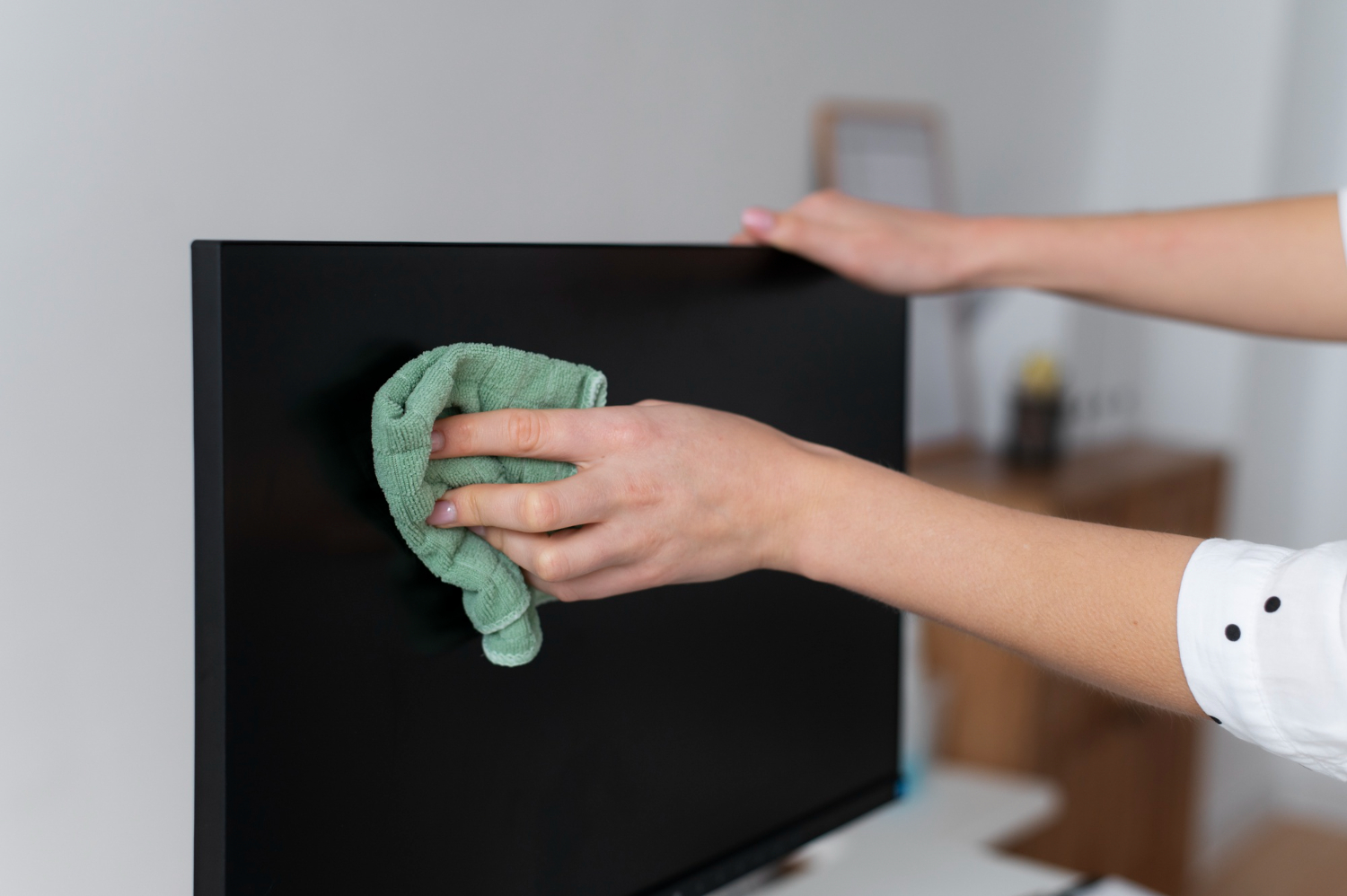
Safe Liquids That Won’t Damage Your TV Screen
Why your TV deserves a gentle touch
Let’s be honest—your TV is probably one of the most expensive (and used) pieces of tech in your home. Whether it’s movie night, game day, or just catching up on your favorite shows, your screen gets a lot of attention. But when smudges, dust, or mystery fingerprints show up, most people grab the nearest cleaner and start wiping.
That’s where the trouble starts. Using the wrong liquid can permanently damage your screen or strip its protective coating. In fact, a 2023 study by AVS Forum found that nearly 18% of TV owners ruined their display using household cleaners.
So, what liquid should you actually use? Let’s break it down and make sure your screen stays crystal clear—and intact.
The worst offenders you should avoid
Before we talk about what you should use, let’s get a few dangerous ones out of the way first.
What NOT to spray on your TV
- Windex or glass cleaner: These usually contain ammonia or alcohol—two ingredients that can erode the screen’s anti-reflective coating.
- Vinegar: Even though it’s great for windows, vinegar is acidic and can cause damage over time.
- Tap water: Minerals in tap water can leave streaks or spots, and may even scratch the surface when mixed with dust.
- Disinfecting wipes: Many contain bleach or other harsh chemicals. Your TV is not a countertop!
Can alcohol or hydrogen peroxide be used in a pinch?
Only if diluted heavily—and even then, it’s risky. A 70% isopropyl alcohol solution diluted with distilled water (1:1 ratio) can be used sparingly, but make sure you apply it to the cloth, not the screen. Still, we only recommend this if you’re out of safer options.
These liquids are safe and screen-friendly
Now let’s talk about the good stuff—liquids that are gentle, effective, and won’t make your screen cry for help.
Best options for safe cleaning
- Distilled water: Always your safest bet. No minerals, no streaks, just pure cleaning power when paired with a microfiber cloth.
- 50/50 mix of distilled water and white vinegar: While vinegar alone is too harsh, when properly diluted, it becomes much safer. Just use it sparingly.
- Pre-made screen-safe cleaners: Look for ones labeled “screen-safe” or “for electronics.” They’re specifically formulated for LED, OLED, and LCD screens.
Need a quick recommendation?
We’ve seen great results with brands like EcoMoist, ScreenMom, and Endust for Electronics. Just make sure they’re alcohol and ammonia-free.
Exactly how to clean your screen without messing it up
Even with the right liquid, bad technique can still scratch or streak your screen. Here’s how to do it right:
Follow these steps for a streak-free clean
- Turn off and unplug your TV. Cleaning while it’s on can cause damage or show fake streaks.
- Use a soft, dry microfiber cloth to remove any loose dust first.
- Lightly dampen a section of the cloth with your safe cleaning liquid. Never spray directly onto the screen.
- Wipe gently in circular motions. Don’t press too hard—you’re not scrubbing grout.
- Let it air dry. If necessary, use a second dry microfiber cloth to gently buff away any remaining moisture.
Bonus tip
Want to avoid cleaning your screen so often? Install LED backlighting behind your TV. Not only does it enhance your viewing experience, it reduces eye strain and keeps you from constantly touching the screen to adjust settings.
Why screen-safe cleaning matters more than ever
Today’s LED and OLED TVs are built to be ultra-thin and visually stunning—but that also means they’re a little more delicate. Cleaning them with the wrong liquid can lead to:
- Permanent ghosting or discoloration
- Scratches that affect image clarity
- Destroyed anti-glare coatings
- Moisture damage in edge-lit panels
That’s why big manufacturers like Samsung and LG repeatedly recommend only using a soft cloth with distilled water or screen-safe cleaners. Trust us—it’s not just marketing. They’ve dealt with enough support tickets to know what causes damage.
Can you make your own screen-safe cleaning liquid?
Absolutely. If you’d rather not buy a pre-made cleaner, just mix your own with a 1:1 ratio of distilled water and isopropyl alcohol (70%). Store it in a small spray bottle and label it clearly so no one mistakes it for something else. Again, spray the cloth, not the TV.
When in doubt, we can help you out
If you’re unsure what to use—or you’re already seeing streaks or weird patches after a DIY cleaning job—we’re here for you. At Smart Home Connect, we don’t just mount TVs—we help keep them looking their best, too.
Contact us and we’ll help you choose the right screen cleaner—or even supply it for you when we handle your next install. Safe screens = happy viewing.
The takeaway on keeping your screen spotless
Cleaning your TV screen shouldn’t be complicated—but it should be careful. The safest liquid? Distilled water or a screen-safe cleaner. Skip the Windex, avoid the vinegar unless it’s diluted, and never reach for disinfectant wipes.
Stick to the right stuff, follow the right steps, and you’ll enjoy a beautiful, streak-free screen for years to come.
And hey, if you need backup—we’ve got your back.


